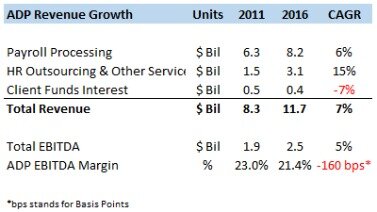What is the Margin of Safety? Definition, Formula, and Example

If not, there is no “room for error” in the valuation of the shares, meaning that the share price would be lower than the intrinsic value following a minor decline in value. Generally, the majority of value investors will NOT invest in a security unless the MOS is calculated to be around ~20-30%. In this particular example, the MOS is 25% — meaning that the share price can drop by 25% before reaching the estimated intrinsic value of $8. Suppose a company’s shares are trading at $10, but an investor has estimated the intrinsic value at $8.

Company fundamentals include sales and earnings, while industry performance encompasses the overall performance of its sector or niche. Economic conditions include macroeconomic factors such as GDP growth, inflation, and interest rates. Investor sentiment measures the overall attitude of investors towards a given asset or market. Apart from protecting against possible losses, the hcm upgrade to take place today can boost returns for specific investments.
Sufficient Margin of Safety
The margin of safety of Noor enterprises is $45,000 for the moth of June. It means if $45,000 in sales revenue is lost, the profit will be zero and every dollar lost in addition to $45,000 will contribute towards loss. For a successful design, the realized safety factor must always equal or exceed the design safety factor so that the margin of safety is greater than or equal to zero. The margin of safety is sometimes, but infrequently, used as a percentage, i.e., a 0.50 M.S is equivalent to a 50% M.S. When a design satisfies this test it is said to have a «positive margin», and, conversely, a «negative margin» when it does not.
Buffett reads financial reports; instead of newspapers and blogs because he thinks financial data gives him an edge over other investors. Buffet assumes that most investors value companies poorly because they rely upon inaccurate media reports. His strategy is to find more accurate information and base his decisions on that information. Value investors believe people pay more for attractive, fashionable, or “sexy” stocks. Therefore, many value investors look closely at unattractive, boring, and unfashionable stocks.

Let’s go back to Netflix to determine if it had a margin of safety following its stock price dive. Netflix’s current P/E is 18, but you believe the P/E ratio will increase to around the S&P 500 number of 24. It’s not unusual for a high-flying growth stock to have a P/E of 350 while the market is at 20 and still outperform over the next 10 years. Any discounted cash flow estimate is bound to look so outlandish as to be useless.
Calculation
The right margin of safety for you as an individual investor depends a lot on your risk tolerance and your investing style. If you’re concerned about minimizing risk, you might aim for a margin of safety of 20% or more. But if growth is your primary goal, a slimmer margin of safety may make sense.
- Generally, the margin of safety concept can be used to trigger significant action towards reducing expenses, especially when a sales contract is at risk of decline.
- Some investors will point out that this is above today’s share price and points to 10% upside.
- If you are interested in buying shares of a company, or even an entire business, you will want to estimate the value of the cash it generates in the future.
- So to reiterate, in the example above, you can use the three different ways of calculating the Margin of Safety to confirm that the company is undervalued.
- Determining a security’s inherent value or genuine worth is highly subjective because each investor utilises a different method of calculating intrinsic value, which may or may not be accurate.
An investor may apply the margin of safety to determine the company’s share price with its current market price and use the variance as a basis for buying securities. It means that there is remarkable upward potential for the stock prices. The margin of safety can be calculated in dollars by subtracting the current market price of an asset from its intrinsic value. The intrinsic value is determined by factors such as company fundamentals, industry performance, economic conditions, and investor sentiment.
Is a higher margin of safety good?
Imagine a business with $5 billion worth of assets, property, and future cash flow from operations, but the stock market values all the shares on the market (Market Capitalization) at $2.5 billion. This means you could buy the entire company for a 50% discount and potentially break to company up and realize a 100% profit on your investment. Investors working with a margin of safety will utilize factors such as company management, market performance, governance, earnings, and assets to determine the stock’s intrinsic value.
Here’s What We Like About Civista Bancshares’ (NASDAQ:CIVB) Upcoming Dividend – Simply Wall St
Here’s What We Like About Civista Bancshares’ (NASDAQ:CIVB) Upcoming Dividend.
Posted: Wed, 02 Aug 2023 10:27:46 GMT [source]
The margin of safety formula percentage is the difference between the current stock price and the net present value of 10 years of future cash flow dividend by the number of shares. In other words, if a company’s stock price is below the actual cash flow value (income) and assets, the percentage difference is the Margin of Safety. The margin of safety is the difference between a company’s intrinsic value (its estimated 10-year cash flow minus inflation) and the current stock price. If the intrinsic value is $100 and the stock price is $80, the margin of safety is 25%.
Is the Margin of Safety the Same as the Degree of Operating Leverage?
In accounting, the margin of safety is calculated by subtracting the break-even point amount from the actual or budgeted sales and then dividing by sales; the result is expressed as a percentage. He knew that a stock priced at $1 today could just as likely be valued at 50 cents or $1.50 in the future. He also recognized that the current valuation of $1 could be off, which means he would be subjecting himself to unnecessary risk. He concluded that if he could buy a stock at a discount to its intrinsic value, he would limit his losses substantially. Although there was no guarantee that the stock’s price would increase, the discount provided the margin of safety he needed to ensure that his losses would be minimal. Alternatively, it can also be calculated as the difference between total budgeted sales and break-even sales in dollars.

Subtract the break-even point from the actual or budgeted sales and then divide by the sales. Alternatively, in accounting, the margin of safety, or safety margin, refers to the difference between actual sales and break-even sales. Managers can utilize the margin of safety to know how much sales can decrease before the company or a project becomes unprofitable. The margin of safety is also an important figure because it shows how safe the business is in producing products. For example, assume a manufacturer calculates its breakeven to be 100 units.
Income Statement: How to Read It Like a Pro Investor
There are three different formulas for calculating the Margin of Safety. The Noor enterprise, a single product company, provides you the following data for the Month of June 2015. By this definition, a structure with an FOS of exactly 1 will support only the design load and no more.
Fortunately, the gold price is cooperating for McEwen Mining and this matters for high-cost producers. In fact, producers that have reported quarter-to-date have enjoyed an average realized gold price of $1,950/oz or better, which should translate to a better Q2 financially for McEwen Mining. That said, the bigger story here which makes up a larger portion of the valuation is the company’s stake in McEwen Copper, which holds a 100% interest in the Los Azules and Elder Creek Projects. And while the economics were decent and better than I expected (albeit costs are likely to rise as cost assumptions tighten up in Feasibility Studies), there was some negative news which we’ll discuss later.
- Risk analysis, failure mode and effects analysis, and other tools are commonly used.
- Margin of safety ratio equals the difference between budgeted sales and break-even sales divided by budget sales.
- Alternatively, in accounting, the margin of safety, or safety margin, refers to the difference between actual sales and break-even sales.
- The margin of safety ratio is an important tool used by investors to ensure they are making wise investments and getting the best possible returns.
- Because investors may set a margin of safety in accordance with their own risk preferences, buying securities when this difference is present allows an investment to be made with minimal downside risk.
Organizations today are in dire need of calculating the difference between their budgeted sales and breakeven sales. They use this margin of safety formula to calculate and ensure that their budgeted sales are greater than the breakeven sales. For ductile materials (e.g. most metals), it is often required that the factor of safety be checked against both yield and ultimate strengths. The yield calculation will determine the safety factor until the part starts to deform plastically. The ultimate calculation will determine the safety factor until failure. On brittle materials these values are often so close as to be indistinguishable, so it is usually acceptable to only calculate the ultimate safety factor.
Margin of Safety Formula in Accounting
That means revenue from the sale of 375,000 units is enough to cover the entire production cost. Generally, the margin of safety concept can be used to trigger significant action towards reducing expenses, especially when a sales contract is at risk of decline. However, a huge margin of safety may protect the business from possible sales variations. Dollar-cost averaging, or investing the same amount repeatedly at regular intervals, protects you from consistently paying too much for investments. You don’t need an exact margin of safety requirement, but it’s essential to give yourself room to be wrong.
If overweight, pare exposure to US tech stocks, suggests report – MintGenie
If overweight, pare exposure to US tech stocks, suggests report.
Posted: Wed, 02 Aug 2023 07:38:42 GMT [source]
He then discounts the cash flow against inflation to get the current value of that cash. Calculating the company’s intrinsic value and, therefore, the margin of safety for stocks means using many variables and calculations. Using a Margin of Safety Calculator, a simple excel spreadsheet would be best.
The actual market price is then used as a comparison point to calculate the margin safety. Fair Value (Academic) – We compute a company’s Fair Value (Academic) using a discounted cash flow analysis with the academic formula for Intrinsic Value that forecasts cash flows into perpetuity. Next, the investor will subtract the current market price from this intrinsic value to obtain the margin of safety ratio. This ratio helps investors determine how much of a discount they would be getting if they purchased the security at its current market price. The term ‘margin of safety’ is used in accounting and investing in referring to the extent to which business, project, or an investment is safe from losses.
